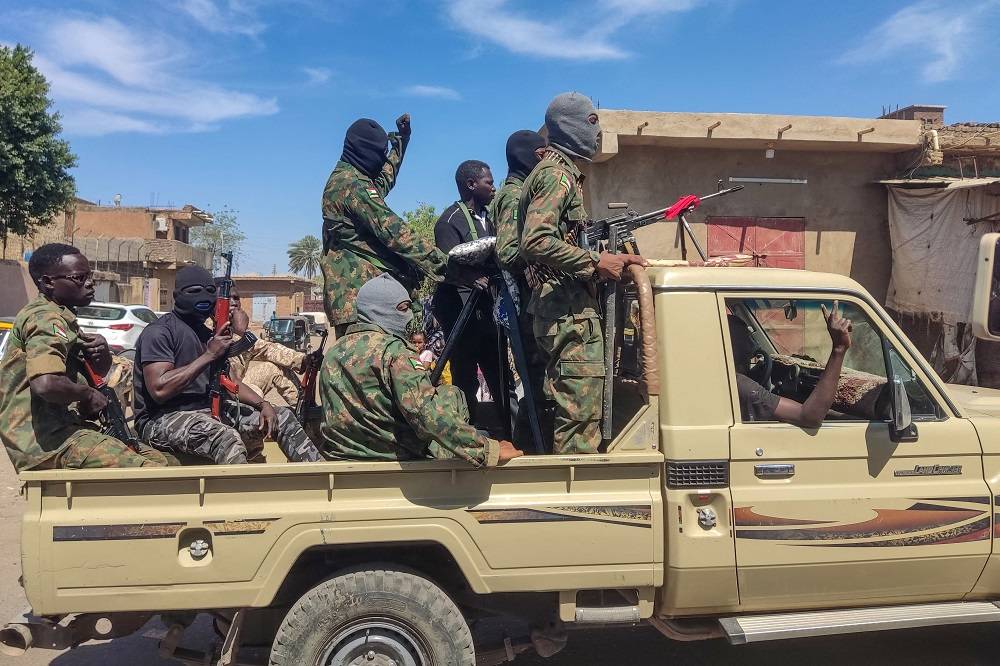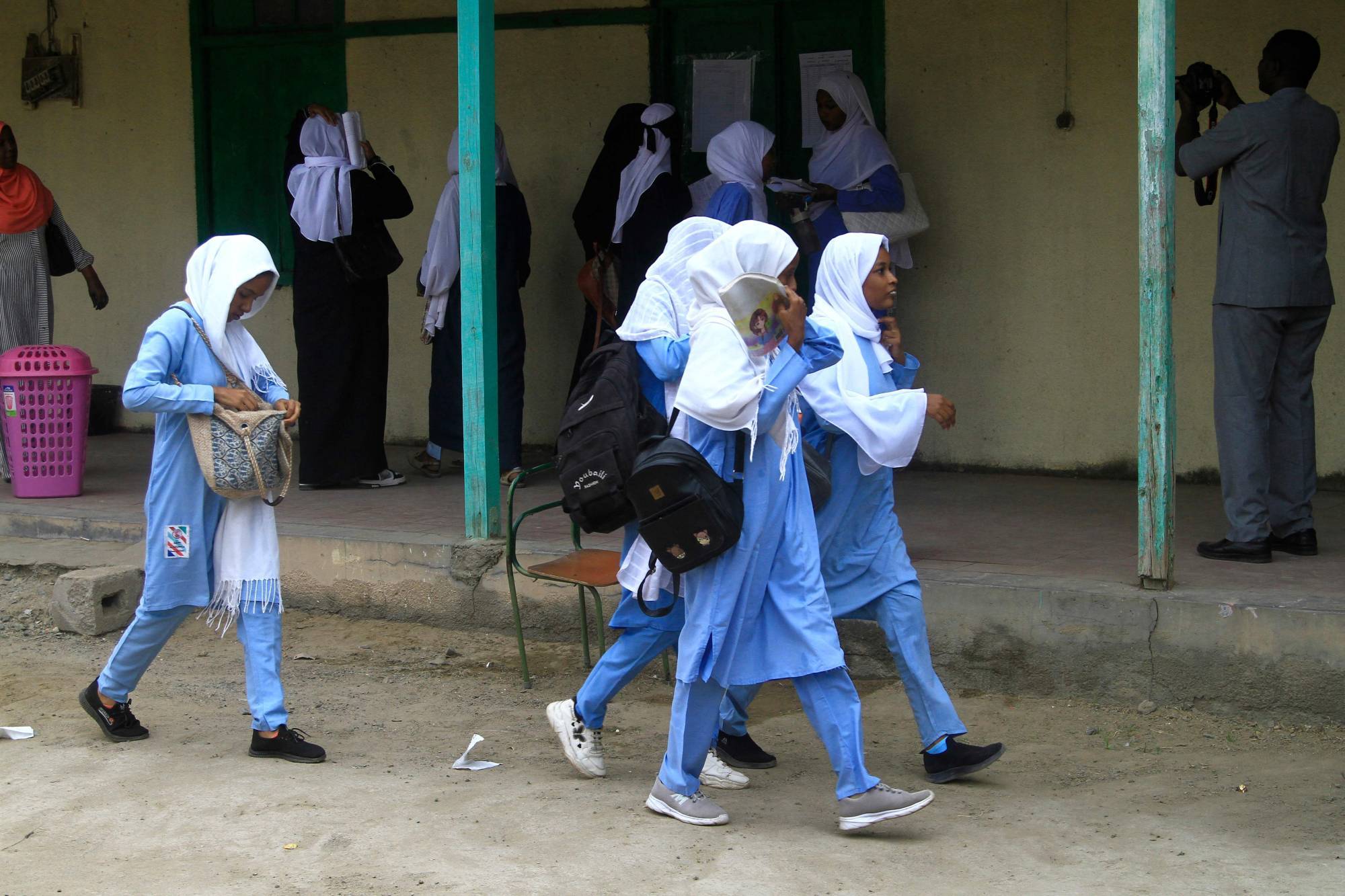Both regional and international conditions seem to favor Russian President Vladimir Putin at the end of the year. 2023 was more turbulent and concerning than any other in the past ten years, both domestically and internationally. Russia faced dangerous turns and major challenges.
The armed rebellion led by the Wagner Group and supported by prominent generals and a large part of the public nearly plunged Russia into domestic chaos mid-year. However, the Kremlin emerged victorious from this decisive internal battle, hitting its opponent with a knockout blow and launching a broad internal purge, which diminished the threat of the proliferation of arms and political ambitions among various influential groups.
Living conditions have been unstable. At the beginning of the year, the Russian economy seemed to be faltering under the weight of 11 sanction packages. By autumn, however, there were signs of improvement across the board. Russia began adapting to its economic isolation from the West, improving its response to the difficult implications, and recording growth in several sectors of the economy.
Over the past year, it became apparent that betting on a military victory against Russia was misguided. The Kremlin has shifted priorities and, after breaking through in Bakhmut mid-year, stopped focusing on broad advancements. Instead, it fortified the “de facto” lines on the map it had established after annexing regions of Ukraine, allowing it to thwart the Ukrainian-Western counter-offensive.
Internationally, the wind blew in the Kremlin’s favor. It benefited from the growing schisms in the Western camp over military aid to Kyiv and the effectiveness of the economic pressure being applied to Moscow. The Gaza war added to Moscow’s gains. The limited global impact of Kremlin-sponsored regional alliances, such as BRICS, the Shanghai Cooperation Organization, and the Commonwealth of Independent States, has not prevented Moscow from developing policies that accumulate benefits for itself and its allies.
According to the Kremlin and broad segments of the public in Russia, the worst is behind them. It seems like Moscow is preparing to reap the benefits of this new year.
Ukraine Freezing The Conflict
In 2024, Putin's strategy involves maintaining the current maps and freezing the conflict in Ukraine. Prominent analysts do not expect any major offensives from the Kremlin in the first half of the year. The Kremlin believes there are strong reasons for this. It believes that Moscow does not need significant changes on the ground that could alter the existing power balance, at a time when the country awaits a crucial election in March. The fact that we all know the outcome does not diminish its significance. It could reinforce Putin's maintenance of power for life. While some had been worried after his controversial wartime decisions, Putin has managed to remain in the Kremlin. This election will solidify “Putinism” in Russia for a long time after the West had expected its collapse.
In this context, we can identify several of Putin's objectives for his war in Ukraine.
Russian forces have effectively managed to freeze the conflict along the entire frontline and prevent any significant breakthroughs. Success is now measured in meters of territorial gains or losses. Experts say that Moscow could tighten its siege on Avdiivka (Donetsk) without launching a large-scale attack, a risk that could come at a heavy price in Russian soldiers’ lives that the Kremlin would rather avoid and believes it can without risking Putin's “popularity.”
The second element is that Moscow is partially winning the "war of attrition." That is why it seeks to widen the rift in the West and expects European unease to grow. Western nations are joining Slovakia, Hungary, and the Netherlands and beginning to advocate dialogue with Moscow.
Moscow believes it can capitalize on the depletion of Western weapons and ammunition, which indicates that the cost of supplying Ukraine will increase in the next phase. This has led some Western countries to support the establishment of joint defense industries with Kyiv as an alternative to supplying military arms and technologies manufactured in NATO countries.
The Kremlin is betting that freezing the conflict paves the way for widening the rift in the West and further shrinking Kyiv's room for maneuver, especially as it expects and solicits domestic conflicts in Ukraine as the postponed presidential election approaches.
Experts don't expect significant military developments in Ukraine before mid-next year. It will likely be tied to Ukraine's domestic situation and the extent to which the Western alliance will weaken.
The year 2024 is expected to be critical in determining the conflict's outcome as it nears its final quarter.
Reinforcing The Allies Front
Despite the limited cohesion of Russia’s regional alliances over the past year, and their frail support for the Kremlin's anti-Western stance, Moscow managed to make several breakthroughs. These include expanding alternative trade routes to counter Western sanctions and increasing the use of national currencies in trade within the Shanghai and BRICS frameworks, and bilaterally with strategic allies like China, which account for about half of Russia's foreign trade. This trend is expected to continue in the new year, with Moscow aiming to enhance alternative supply routes, particularly the North-South corridor, in cooperation with China, Iran, and South Caucasus countries, and to improve trade terms with its allies.
In terms of international relations, the Kremlin is working to solidify its alliance with countries in the Global South, challenging US dominance in dealing with regional disputes. This strategy became more pronounced with the outbreak of the Gaza War. That is why Moscow is looking to expand collaboration with Africa, setting the stage through the reorganization of Wagner-like groups in various African countries. This lays the foundation for Russia’s persistent and direct intervention in domestic politics, as well as allowing it to help some African countries resist Western pressures.
Similarly, Moscow seeks to invigorate the Shanghai Cooperation Organization and expand the influence of the BRICS on regional policies. However, internal divergences among the members of these two blocs, such as the differences between China and India, were obstacles to achieving this in the past year.
With regard to its relationship with its most prominent ally, China, the latter will become the “senior” partner in 2024 after Moscow had sought to establish parity in the past. Russia and China are planning to launch joint projects in several fields in 2024 to enhance coordination of foreign policies and bolster joint strategic initiatives. This includes plans for massive projects in shipbuilding, technology, and green energy. Notably, China has now replaced the European Union as Russia’s primary trading partner. In 2023, the volume of bilateral trade increased by 23 percent, rising to 201 billion dollars.
Iran, A Strategic Ally
Continuing to strengthen its relationship with Iran is among the main Russian policy decisions for the new year, as it is Russia's most prominent regional partner. The consolidation of this partnership in the Ukrainian war, with Tehran playing a prominent role in supplying Moscow last year, has allowed the two countries to build upon this partnership. It is beginning to evolve through agreements on joint industries being developed in both civilian (automobile manufacturing, aircraft assembly...) and military sectors. Military cooperation primarily entails cooperation in drone manufacturing and continuing the development of their defense missile industries. In this context, there is also talk of Russia potentially granting Iran a long-awaited deal for the latest generation of “Sukhois.”
The Russians and Iranians believe that the two sides will sign a new and comprehensive strategic partnership agreement in the first half of 2024. The two countries have been drafting this agreement for two years now. It is expected to take their bilateral relations to a new level, and after a final draft that covers all areas of future cooperation, has been agreed to, all it awaits is the formal signing ceremonies.
Regionally, the two countries are not hiding their intention to close the gap in their positions on the hot issues, especially with regard to the Iranian nuclear deal and the ongoing conflict in Syria, which is also expected to enter a new phase in the new year.
Syria, A Battlefield Once Again
The war in Ukraine and the positions adopted by Tel Aviv, which has overtly supported Kyiv, as well as the repercussions of the ongoing war in Gaza, have led to a significant shift in Russia's priorities in Syria.
Nowhere was this more evident than in Moscow's shift to a less cautious and sensitive approach to maintaining the delicate balance it had established between its relations with Iran on the one hand, and Israel on the other. This shift can be seen in the increased frequency of Russian condemnation of Israeli strikes on Iranian positions in Syria, and in the fact that Moscow has walked back on its commitment to reach a deal with the West that “regulates Iran’s presence” in Syria. Limiting Iran’s presence in parts of the country was a prominent issue in discussion between the heads of the national security councils of Russia, the United States, and Israel, as well as the previous understandings to keep Iran away from 'sensitive' locations such as the front lines in the Golan Heights.
Currently, Moscow seems inclined to ease its commitments in this regard. Towards the end of the year, Moscow poured cold water on Western reports that Russia was ready to mediate the renewal of an agreement to keep Iran 80 kilometers away from the Golan. Moreover, there are reports of Moscow facilitating the transfer of Iranian supplies through Syrian airports under its control, providing an alternative to the airports regularly bombed by Israel.
Additionally, Moscow has, at times, directly or indirectly encouraged the expansion of attacks on US bases in Syria and Iraq.
Experts believe that Moscow is likely to continue along this course in the next phase. It seems to prefer remaining cautious and preventing things from escalating into a full-blown clash that could lead to the expansion of the Gaza war into a regional conflict.
That means that Syria is about to become an active conflict zone once again, albeit one that is to a certain extent “contained” by external actors, as Moscow is expected to abandon its efforts to regulate Iran’s presence in the country. At the same time, experts anticipate that the coming year will see Russian-Israeli and Russian-American understandings regarding “collision avoidance protocols” weaken, though not so to an extent that leads to direct confrontation.
Russia Consolidates its Gains in 2024 and Prepares for The Rift in the Western Camp to Widen

Putin and his Defense Minister Sergei Shoigu visiting to a military training camp in October (AFP)

Russia Consolidates its Gains in 2024 and Prepares for The Rift in the Western Camp to Widen

Putin and his Defense Minister Sergei Shoigu visiting to a military training camp in October (AFP)
لم تشترك بعد
انشئ حساباً خاصاً بك لتحصل على أخبار مخصصة لك ولتتمتع بخاصية حفظ المقالات وتتلقى نشراتنا البريدية المتنوعة









